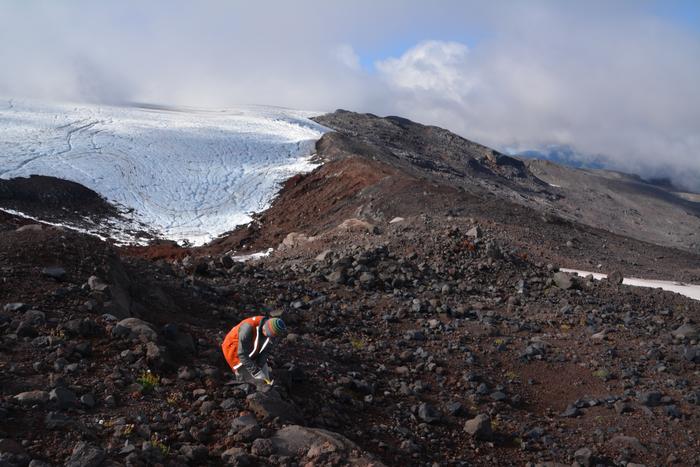How can climate change influence volcanic activity? This is what a recent study presented at the Goldschmidt Conference in Prague hopes to address as a team of researchers investigated a link between thinning glacier ice and dormant subglacial volcanoes potentially becoming active. This study has the potential to help researchers climate scientists, legislators, and the public better understand the long-term implications of climate change and the steps that can be taken to mitigate them.
For the study, the researchers examined six volcanoes in southern Chile to ascertain how the thinning of the Patagonian Ice Sheet located in Chile and once covered the entire country influenced volcanic activity in the region. The researchers conducted this study by analyzing local crystallization and argon dating to ascertain exact dates of past volcanic activity.
Image of study author, Pablo Moreno-Yaeger, collecting samples in Chile. (Credit: Pablo Moreno-Yaeger / UW-Madison)
In the end, the researchers discovered that the Patagonian Ice Sheet between 26,000-18,000 years ago during the last ice age enabled the buildup of magma chambers located approximately 10-15 kilometers (6.2-9.32 miles) beneath the surface. Even more alarming, the researchers found once the Patagonian Ice Sheet started receding, this enabled the creation of volcanoes from the built-up magma chambers.
“Glaciers tend to suppress the volume of eruptions from the volcanoes beneath them,” said Pablo Moreno-Yaeger, who is a PhD student at the University of Wisconsin-Madison and who presented the study at the conference. “But as glaciers retreat due to climate change, our findings suggest these volcanoes go on to erupt more frequently and more explosively. The key requirement for increased explosivity is initially having a very thick glacial coverage over a magma chamber, and the trigger point is when these glaciers start to retreat, releasing pressure – which is currently happening in places like Antarctica.”
This study comes as climate change continues to ravage the planet with more extreme weather events like increased summer temperatures, stronger and more frequent hurricanes, and flooding as recently seen in central Texas.
What new discoveries will researchers make between climate change and volcanic activity in the coming years and decades? Only time will tell, and this is why we science!
As always, keep doing science & keep looking up!
Sources: Goldschmidt Prague 2025, EurekAlert!
